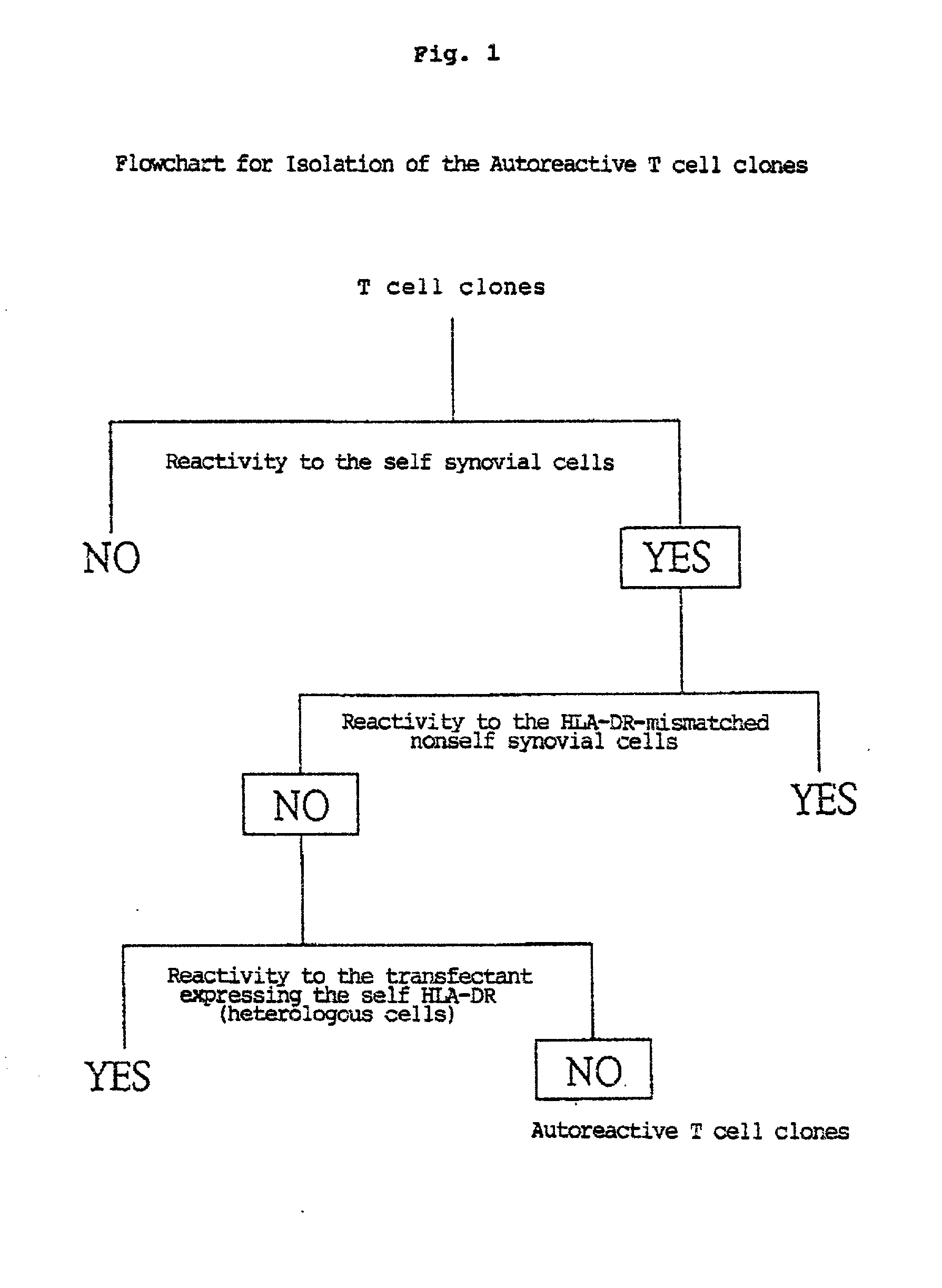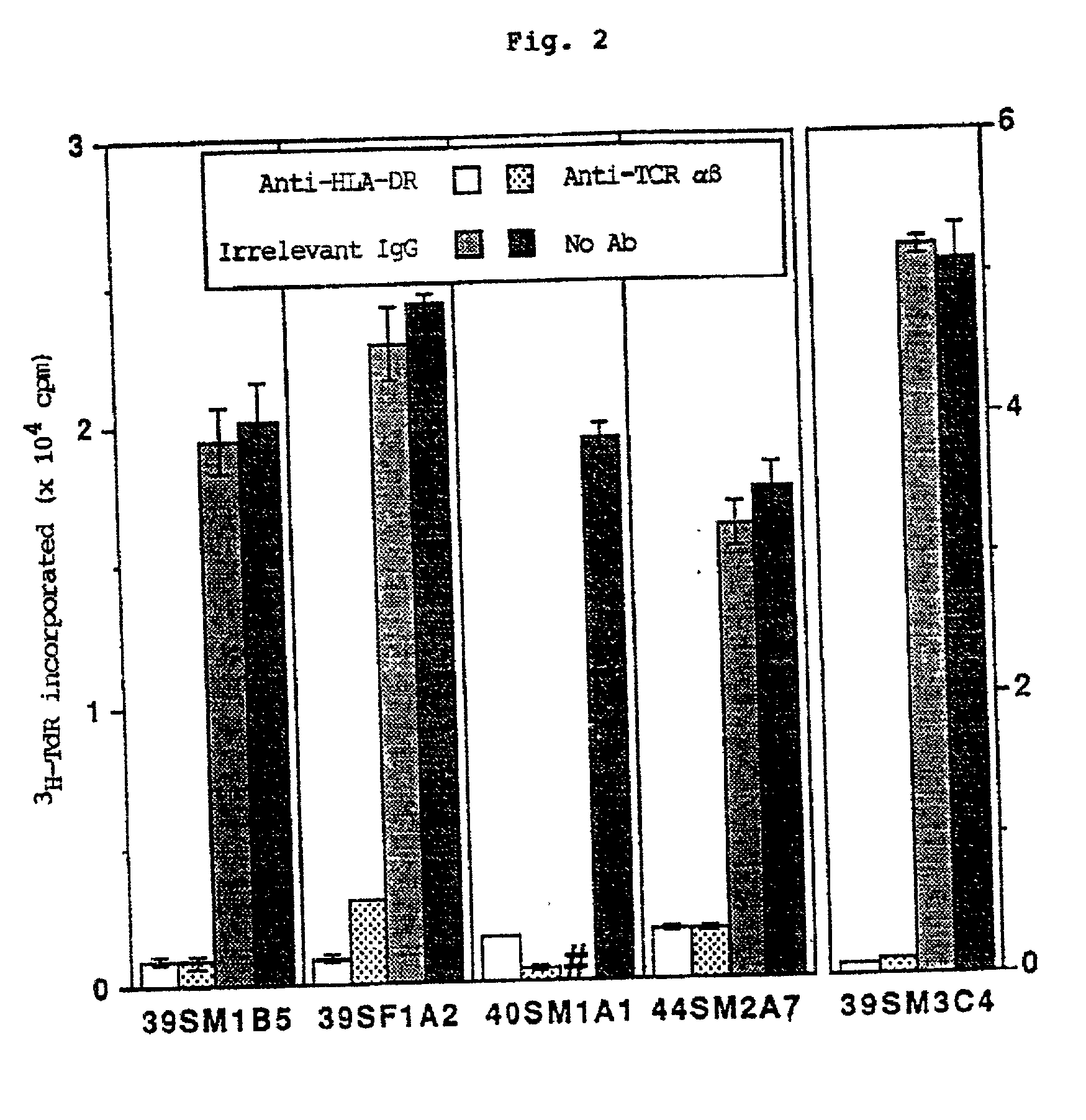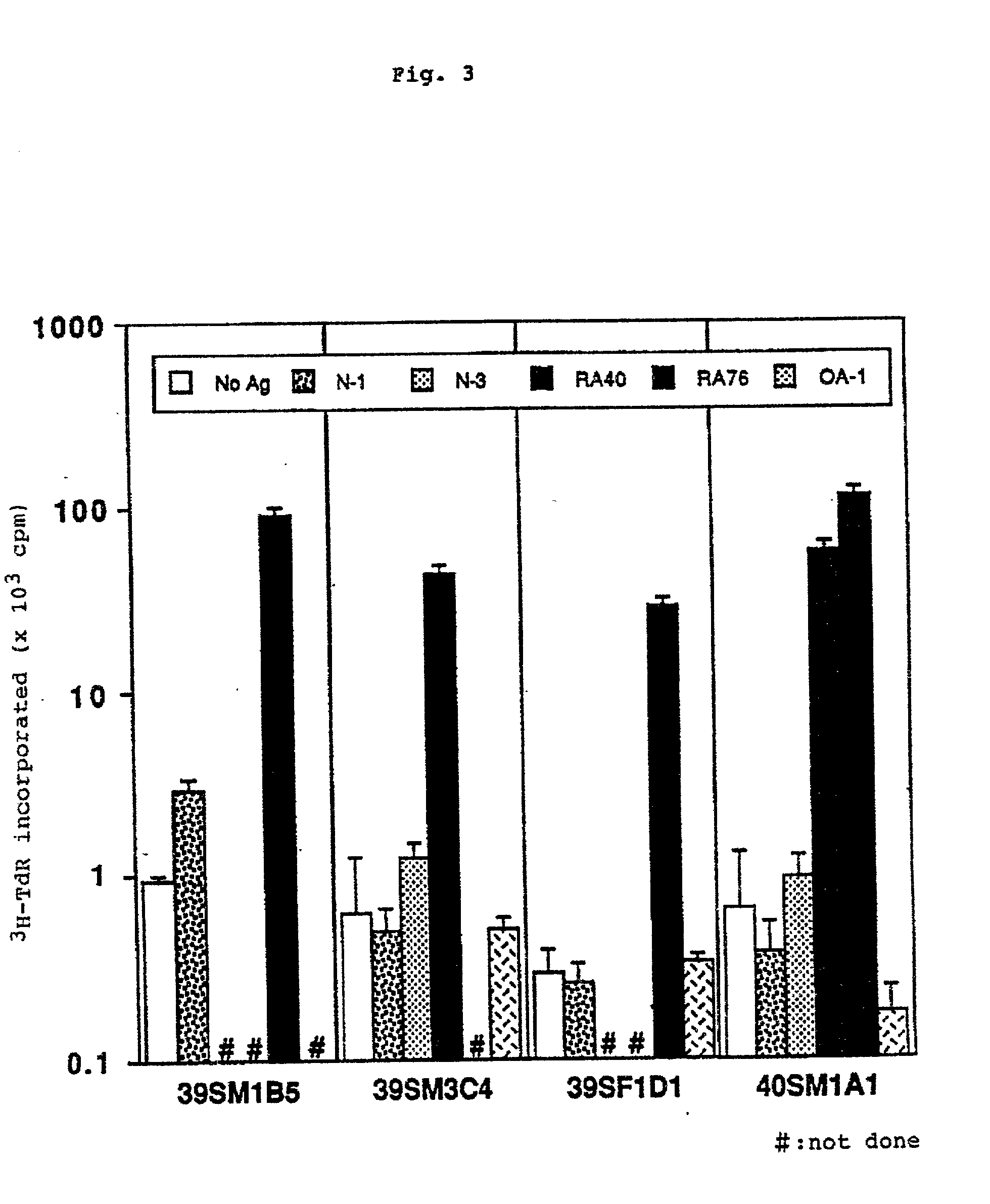Human t cell clone specific for rheumatoid arthritis
a human t cell and rheumatoid arthritis technology, applied in the field of human t cell clone specific for rheumatoid arthritis, can solve the problems of unclear pathogenesis of ra, inability to use immunomodulators, and inability to detect synovial cells,
- Summary
- Abstract
- Description
- Claims
- Application Information
AI Technical Summary
Problems solved by technology
Method used
Image
Examples
experiment 1
[0088] (1) HLA-DR restriction of autoreactive T cell clones
[0089] Eight autoreactive T cell clones (39SM1B5, 39SM1D4, 39SM3C4, 39SF1A2, 39SF1D1, 39SF2A5, 40SM1A1, and 44SM2A7) prepared as described in Example 1 were analyzed for their HLA-DR restriction fashions by the examination of the reactivity to the RA antigen-presenting self or nonself RA synoviocytes, and to the antigen-presenting cell without the RA antigen. Antigen-presenting cells (PB-APC) from peripheral bloods of RA patients or healthy donors were used as the antigen-presenting cell without the RA antigen,
[0090] The T cell clones were examined in their proliferating activity by coculturing with the self or nonself RA synoviocytes or PB-APC from the RA patients or healthy donors (HD) in RPMI 1640 medium supplemented with 10% Fetal calf serum and antibiotics at 37.degree. C. in 5% CO.sub.2 atmosphere. The results are shown in Table 1.
1TABLE 1 HLA-DR4 or DR9-Restricted Recognition of the Synovial Cells by the RA Joint-Deri...
PUM
| Property | Measurement | Unit |
|---|---|---|
| molecular weight | aaaaa | aaaaa |
| molecular weight | aaaaa | aaaaa |
| concentration | aaaaa | aaaaa |
Abstract
Description
Claims
Application Information
 Login to View More
Login to View More - R&D
- Intellectual Property
- Life Sciences
- Materials
- Tech Scout
- Unparalleled Data Quality
- Higher Quality Content
- 60% Fewer Hallucinations
Browse by: Latest US Patents, China's latest patents, Technical Efficacy Thesaurus, Application Domain, Technology Topic, Popular Technical Reports.
© 2025 PatSnap. All rights reserved.Legal|Privacy policy|Modern Slavery Act Transparency Statement|Sitemap|About US| Contact US: help@patsnap.com



